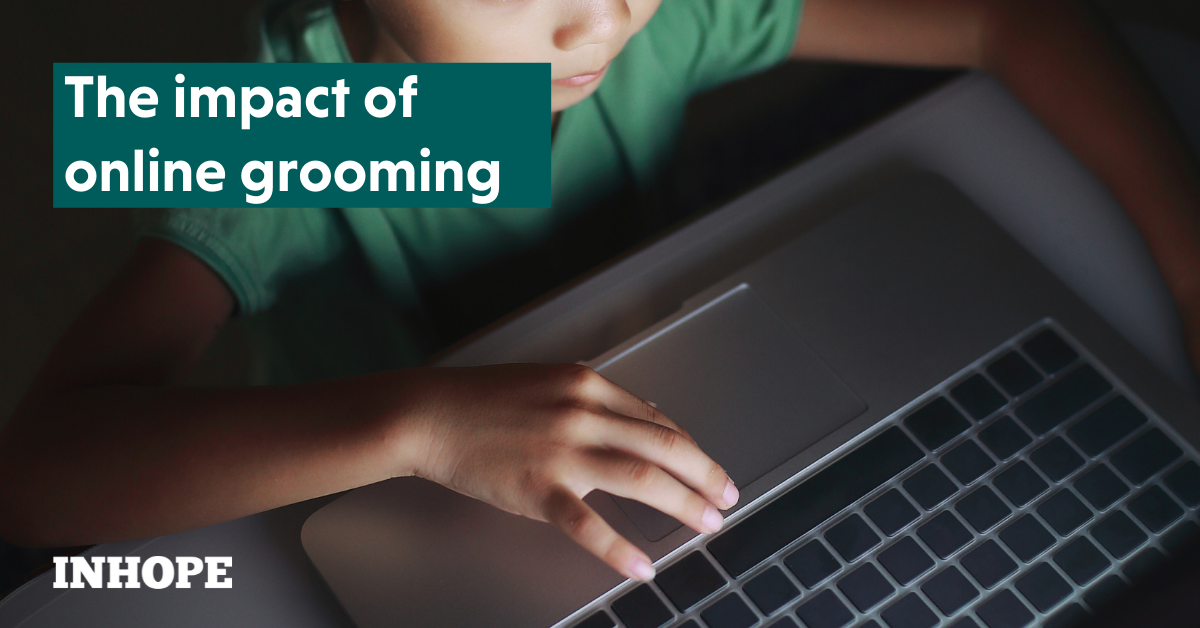Article
Educational Articles
Industry News & Trends
The impact of online grooming
Grooming refers to the “actions deliberately undertaken to befriend and establish an emotional connection with a child, to lower the child’s inhibitions in preparation for sexual activity”.
Children’s increasing presence in online spaces, specifically amplified due to the pandemic, has led to a significant increase in online grooming cases. Technological developments have made it easy for offenders to exchange their expertise across different platforms and share their knowledge on how to solicit children online (Belgian Federal Police, 2021) Due to the rapid development of new social media platforms, regulation of children's online safety is becoming more difficult. This is why it has become increasingly important to be able to identify and prevent grooming within the early stages.
Grooming, in most cases, is a creeping process that develops over a longer period. This characteristic is what makes it so dangerous and difficult to detect within the early stages. Perpetrators tend to target children within their close circle or contact children online by creating fake profiles. After establishing trust through consistent attention and creating the appearance of a friendly or even romantic relationship, perpetrators will begin to sexualise the relationship, oftentimes by inciting the child to create and share self-generated intimate content. The images are then used by the groomer to extort even more content and to blackmail the child into continuing the abusive relationship. In some cases, the self-generated content is distributed by the perpetrator on Child Sexual Abuse Material (CSAM) hosting sites or shared with other offenders to create false profiles, to trick and solicit other children online.
The consequences
Children who have been victimised and experienced grooming are likely to suffer from serious long-term mental health issues such as anxiety, depression, post-traumatic stress, and suicidal thoughts. Especially children who have been solicited into creating and sharing intimate content of themselves tend to experience a lot of shame and blame themselves for the abuse. Hereby it does not matter whether the abuse took place offline or if all interaction between the perpetrator and child took place online. Children can be seriously impacted by grooming even when no personal contact has occurred, which is why it is crucial to interfere as soon as possible.
While all children, regardless of their social, religious, or ethnic background can be targeted by an online grooming attempt, certain demographics are statistically more frequently targeted by perpetrators. Girls, between the ages of 13 and 17, LBGTQ children, as well as children with increased vulnerabilities such as mental or physical disabilities, are more likely to be solicited.
How can we safeguard children?
As grooming develops into an overwhelmingly digital issue, it becomes increasingly important to educate children on how to safely navigate through online spaces. As platforms are mostly accessed from home, using the internet can feel like a safe space for children - it is crucial to emphasise to children that using the internet can be risky and that they need to proceed with caution. Educators, caregivers, and parental groups need to be made aware of the tools and techniques used by perpetrators to be able to spot the signs early on and interfere as soon as they suspect inappropriate contact.
Additionally, it is crucial that online communication platforms that host children are held accountable to establish and maintain more child-oriented and safety-oriented environments. This can be attempted through the implementation of ID and age verification for all users through which children's profiles could be automatically set to private or restricted to communicating with adults.
If you think that you or someone you know might be the victim of grooming, it is important to remember that it is not your fault and that help is available.
For more information about how to spot grooming and keep your child safe, or to seek professional help, contact your national helpline.

Photo by INHOPE
As grooming develops into an overwhelmingly digital issue, it becomes increasingly important to educate children on how to safely navigate through online spaces.
'